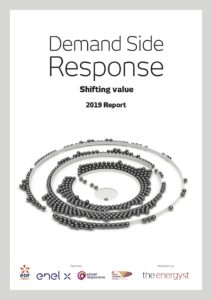
Conor Maher-McWilliams, head of flexibility at Kaluza, believes domestic flexibility could be bigger than the business-to-business market, “based on the fact that we are using assets that have primary uses”.
He also thinks electric vehicles could ultimately displace standalone battery storage.
Kaluza is working alongside sister company Ovo and other suppliers to aggregate domestic heating and electric vehicles into its virtual power plant (VPP). The company won’t disclose the size of its portfolio, but Maher-McWilliams said that the company over summer notched up its first “100+ install week, which is almost a megawatt in a week.”
While the company has “aggressive scale targets,” he says volume requirements are “no longer the limiting factor” in terms of bidding into commercial markets and services tenders. The barrier is metering requirements and standards, something the firm is working with National Grid ESO and others to resolve.
“Assuming we can be successful, we don’t see why portfolios of EVs can’t push large scale batteries out of the market,” says Maher-McWilliams. “The time scale is uncertain, but in the long run, yes.”
He says developing access to flexibility “at the edge of the low voltage network gives us the opportunity to stack services at LV levels, which means, in theory, we should also be able to offer services at lower cost.”
But Maher-McWilliams agrees with others interviewed for The Energyst’s 2019 DSR report that there is an urgent need for clearer locational price signals – and hopes Ofgem and DNOs can deliver.
In the meantime, the firm is striking partnerships with as many companies as possible in order to achieve the density required to solve problems on low voltage networks – and targeting areas where it can see flexibility will be needed. It hopes that approach will help solve the current chicken and egg conundrum faced by distribution networks.
“You have to start [deploying flexible solutions] before you need to procure flexibility,” says Maher-McWilliams. “So that is our main message to Ofgem and the DNOs.”

A version of this article was first published in The Energyst’s 2019 DSR Report.
The report provides a comprehensive snapshot of the demand-side response (DSR) market, a survey of DSR providers and qualitative interviews with industrial and commercial firms, plus views from National Grid ESO, distribution network operators, consultants and other market actors.
Download your free copy here.
Related stories:
Calling all fleet operators: Free vehicle-to-grid charging infrastructure
Free 2019 EV charging infrastructure report
Ovo to buy SSE’s retail customer book
Mitsubishi takes 20 per cent stake in Ovo
Vehicle-to-grid study suggests £400 annual revenue per electric vehicle
Nissan: 2019 a “breakthrough year” for vehicle-to-grid
Electric vehicles: Define smart charging, urge DNOs
Vehicle-to-grid: Are we nearly there yet?
EVs: Car parks sought for V2G trials
National Grid predicts huge solar growth, while EVs create huge storage capacity
Follow us at @EnergystMedia. For regular bulletins, sign up for the free newsletter.




I can’t wait until I can use the battery in my EV to power my home during peak hours and also store my PV output if I don’t want to sell that to the grid (for whatever reason).